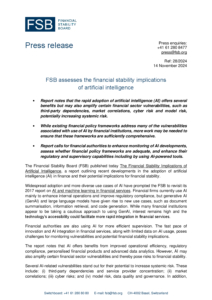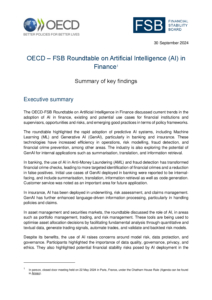This report revisits the 2017 FSB report on AI and machine learning in financial services by taking stock of recent advancements, exploring use cases in the financial sector and drivers of adoption, as well as new potential benefits and AI-related financial sector vulnerabilities.
In the past few years, technological advancements and increased computational power have led to an uptake in AI adoption by financial firms and supervisors. AI offers benefits such as increased operational efficiency, regulatory compliance, financial product customisation and advanced analytics. With the advent of generative AI (GenAI) and large language models, the range of use cases has become more diverse.
While AI offers benefits like improved operational efficiency, regulatory compliance, personalised financial products, and advanced data analytics, it may also potentially amplify certain financial sector vulnerabilities. AI-related vulnerabilities that stand out for their potential to increase systemic risk include: (i) third-party dependencies and service provider concentration; (ii) market correlations; (iii) cyber risks; and (iv) model risk, data quality and governance. GenAI also increases the potential for financial fraud and disinformation in financial markets. Misaligned AI systems that are not calibrated to operate within legal, regulatory, and ethical boundaries can also engage in behaviour that harms financial stability. And from a longer-term perspective, AI uptake could also drive changes in market structure, macroeconomic conditions and energy use that could have implications for financial markets and institutions.
While existing regulatory and supervisory frameworks address many of the vulnerabilities associated with AI adoption, more work may be needed to ensure that these frameworks are sufficient. The report calls for national financial authorities and international bodies to enhance monitoring of AI developments, assess whether financial policy frameworks are adequate, and enhance their regulatory and supervisory capabilities including by using AI-powered tools.

